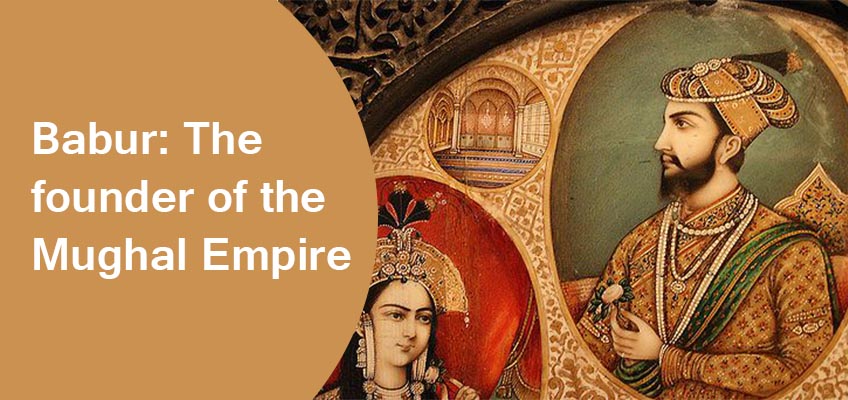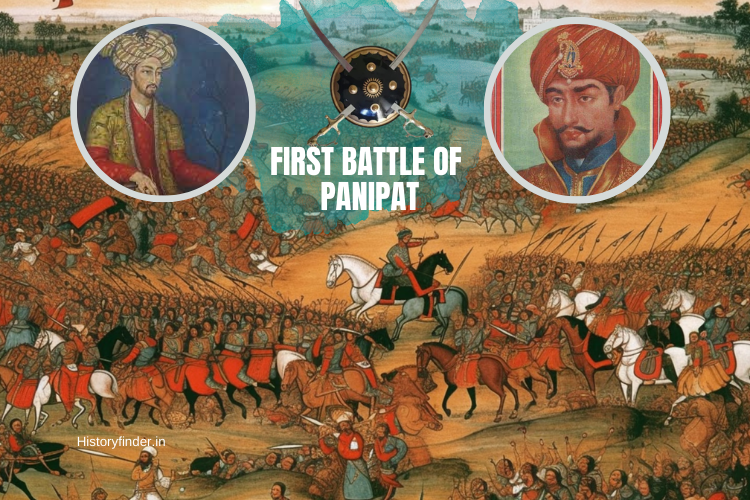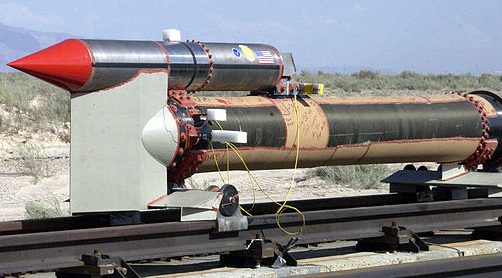Babur: The Foundation of the Mughal Empire
Explore Babur’s early life, battles like Panipat and Khanwa, and the establishment of the Mughal Empire. Crucial insights for UPSC Prelims & Mains GS I and History Optional.

Introduction
“Babur and the Foundation of the Mughal Empire” is important for UPSC as it marks the beginning of Mughal rule in India, a major shift in medieval history. Babur’s victory in the First Battle of Panipat (1526), his use of artillery, and his memoir Baburnama provide crucial insights into early Mughal administration and warfare. Understanding his role is essential for tracing the rise of one of India’s most influential empires, making it relevant for both Prelims and Mains (GS I and History optional).
Central Asia in the 15th Century
- After the decline of the Mongol empire, Timur reunited Iran and Turan, forming an empire stretching from the Volga to the Indus, including Asia Minor, Iran, Trans-Oxiana, Afghanistan, and parts of Punjab.
- His grandson Shahrukh Mirza (d. 1448) preserved much of the empire and promoted art and culture, turning Samarqand and Herat into major cultural hubs.
- The Timurid Empire weakened due to internal conflicts and frequent division of territories among successors.
Rise of New Regional Powers
- The Uzbeks, a Mongol-origin tribe that had embraced Islam, invaded Trans-Oxiana and challenged Timurid rule.
- The Safavid dynasty rose in Iran, promoting Shiism and suppressing Sunni opposition.
- The Uzbeks (Sunnis) and Safavids (Shiites) clashed due to both political rivalry and sectarian differences.
- Meanwhile, the Ottoman Empire was expanding, seeking dominance over Iran, Iraq, and Eastern Europe, leading to a three-way imperial rivalry in 16th-century Asia.
Lineage and Early Life of Babur
Babur, originally named Zahiruddin Muhammad, was the founder of the Mughal Empire in India. He was born in 1483 CE in the principality of Farghana (in present-day Uzbekistan). He was a descendant of two of the most formidable conquerors in history. On his father’s side, he traced his lineage to Timur, the founder of the Timurid Empire, and on his mother’s side, to Chagatai, the second son of the Mongol ruler Chengiz Khan. Due to his descent from Timur, the Mughals are also known as Timurids.
In 1494 CE, at the young age of twelve, Babur ascended the throne of Farghana after the death of his father, Umar Shaikh Mirza. However, the political environment in Central Asia was turbulent, and Babur soon lost control over both Farghana and Samarkand to the powerful Uzbek chief, Shibani Khan. Dispossessed and constantly under threat, Babur set his eyes on India as a viable alternative for establishing a stable dominion.
- His defeat by the Uzbek chief Shaibani Khan forced him to retreat.
- In 1504, Babur captured Kabul, using it as a base for 14 years while attempting to reclaim his ancestral territories.
- His efforts to gain support from the Herat ruler failed, and Shaibani Khan later conquered Herat, bringing the Safavids into direct conflict with the Uzbeks.
- In 1510, Shah Ismail of Iran defeated and killed Shaibani Khan.
- With Safavid help, Babur briefly recaptured Samarqand but disliked the Iranian dominance, which treated him like a subordinate.
- The Uzbeks soon regained control, and Babur was ousted again.
- The Ottomans later defeated Shah Ismail, making the Uzbeks the dominant power in Central Asia.
- Realising he could not reclaim his Central Asian homeland, Babur redirected his ambitions towards India, laying the foundation for the Mughal Empire.
Reasons for Invasion of India
Babur’s movement towards India was not merely due to a desire for conquest. Several pragmatic reasons influenced his decision:
- Loss of Ancestral Territories: After losing his Central Asian possessions to the Uzbeks, Babur needed a new base for his political ambitions.
- Economic Motivation: Kabul, which Babur managed to capture in 1504 CE, had a meagre income and could not support his military and administrative needs.
- Lure of Wealth: India was renowned for its immense wealth and fertility, which had attracted invaders for centuries.
- Political Instability in India: The death of Delhi Sultan Sikandar Lodhi and the weak rule of his son, Ibrahim Lodhi, created a power vacuum. Babur was invited by several discontented nobles like Daulat Khan Lodhi (Governor of Punjab), Alam Khan (Ibrahim’s uncle), and Rana Sanga of Mewar, who wanted to overthrow Ibrahim.
Favourable Conditions in India
- After the death of Sikandar Lodi in 1517, his successor, Ibrahim Lodi, faced opposition due to his attempts at centralising power.
- Afghan nobles and Rajput rulers were discontented, especially Daulat Khan Lodi, the governor of Punjab, who was operating independently.
- In 1518–19, Babur captured Bhira and demanded the return of former Turkish territories, but Daulat Khan resisted, detaining Babur’s envoy.
Initial Campaigns and Setbacks
- In response to Daulat Khan’s defiance, Babur launched another expedition in 1520–21, capturing Bhira, Sialkot, and Lahore with ease.
- However, he had to retreat to suppress a rebellion in Qandahar, which took over a year to subdue.
- Once Qandahar was secured, Babur resumed focus on the Indian campaign.
Invitations and Final Invasion
- Daulat Khan Lodi, through his son Dilawar Khan, invited Babur to overthrow the unpopular Ibrahim Lodi.
- Babur may also have received a similar invitation from Rana Sanga of Mewar, who was also opposed to Ibrahim’s rule.
- These developments convinced Babur that the moment was opportune for a full-scale invasion.
Conquest of Punjab
- In 1525, while Babur was advancing toward India, he learnt that Daulat Khan had turned hostile again, gathered a large force, and expelled Babur’s men from Sialkot.
- As Babur advanced, Daulat Khan’s army disbanded without resistance, and Daulat Khan surrendered and was pardoned.
- Within just three weeks of crossing the Indus River, Babur had taken control of the entire Punjab region, paving the way for his conquest of Hindustan.
The First Battle of Panipat (1526 CE)

Background and Preparation
- After taking Kabul in 1504, Babur continuously aspired to conquer Hindustan.
- A clash with Ibrahim Lodi, the Sultan of Delhi, became inevitable.
- Ibrahim approached the battlefield with around 100,000 troops and 1,000 elephants, though the actual number of soldiers was likely lower due to the inclusion of many non-combatants.
- Babur began with 12,000 soldiers, later reinforced by his Indian allies and nobles in Punjab, though his forces remained smaller than Ibrahim’s.
Strategy and Use of Technology
- Babur employed Ottoman-style defences:
- One flank was protected by the city of Panipat, and the other by trenches filled with tree branches.
- A barrier of linked carts served as a defensive wall with gun platforms between them.
- He used the services of Ottoman artillery experts, Ustad Ali and Mustafa.
- Although gunpowder was known in India, Babur’s effective use of artillery marked a turning point in Indian warfare.
- His first recorded use of gunpowder was during the siege of Bhira.
The Battle (21st April 1526)
- Ibrahim Lodi, expecting a fast-moving cavalry fight, was unprepared for Babur’s fortified defence.
- After a week of minor skirmishes, Lodi committed his forces to a full battle.
- Babur’s flanks encircled the enemy, while front-line gunners and archers inflicted heavy damage.
- Babur credited his archers more than his artillery for the victory.
- Lodi’s elephants had little impact, likely due to poor deployment.
- The battle lasted 2–3 hours; Ibrahim Lodi was killed along with over 15,000 of his troops.
Aftermath and Impact
- The victory ended Lodi rule and gave Babur control over Delhi and Agra.
- The treasure captured in Agra eased Babur’s financial burdens.
- Territories as far as Jaunpur opened up, but Babur still had to fight Rana Sanga of Mewar and the Eastern Afghan chiefs to fully secure his position.
Challenges After Panipat
Victory at Panipat did not ensure complete stability for Babur:
- Many of Babur’s nobles were reluctant to stay in India due to the heat and unfamiliar conditions.
- Locals were hostile, abandoning villages ahead of Babur’s forces—possibly out of fear of Timur’s earlier raids.
- Babur resolved to stay in India, refusing to return to the poverty of Kabul, and allowed discontented nobles to return home.
- This firm decision boosted morale but also triggered preparations for war by Rana Sanga.
Historical Significance
- Although not immediately decisive politically, the battle paved the way for Mughal rule in North India.
- It introduced new military techniques, particularly the use of gunpowder and field fortifications, marking a shift in Indian warfare.
Battle of Khanwa (1527 CE, near Fatehpur Sikri)
One of the fiercest battles in Indian history, the Battle of Khanwa was fought between Babur and Rana Sanga near Fatehpur Sikri.
- A major battle between Babur and Rana Sanga of Mewar, supported by a coalition of Rajput rulers.
- Babur emerged victorious, securing his control over the Delhi–Agra region.
- Rana Sanga was backed by Rajput chiefs from Jalore, Sirohi, Dungarpur, Amber, Medini Rai of Chanderi, Hasan Khan of Mewat, and Mahmud Lodhi, son of Sikander Lodhi.
- Babur portrayed the conflict as a jihad and assumed the title of Ghazi after his triumph.
Consolidation After Khanwa
Following the victory, Babur consolidated his power in north-central India:
- Fortresses Captured: Gwalior, Dholpur, Alwar, and other key forts were captured from Hasan Khan Mewati.
- Alliance Breakdowns: Rajput alliances collapsed after Rana Sanga’s defeat.
Battle of Chanderi (1528 CE)
- Fought between Babur and Medini Rai, the Rajput ruler of Malwa.
- Despite brave resistance, the Rajputs were defeated easily.
- The battle marked the collapse of Rajput resistance in the region.
- Babur halted further expansion in Rajputana due to rising Afghan unrest in eastern Uttar Pradesh.
Battle of Ghagra (1529 CE, near Bihar)
This was Babur’s final major military campaign in India.
- Babur fought against Mahmud Lodhi (Ibrahim Lodhi’s brother) who was supported by Nusrat Shah of Bengal, posed a challenge in the east.
- Location: The battle was fought near the Ghagra River in Bihar.
- Although the Afghans had lost Delhi, they remained strong in Bihar and Jaunpur.
- Babur forced their retreat but failed to secure a decisive victory.
Shortly afterward, Babur fell ill and died in 1530 CE in Agra. His body was later taken to Kabul, where he was buried.
Significance of Babur’s Advent into India
Babur’s short reign (1526–1530 CE) was significant in many ways:
Strategic and Political Importance
- For the first time since the Kushan era, Kabul and Qandahar became part of a North Indian empire.
- These regions, historically used as invasion routes, were now under Indian control, ensuring nearly 200 years of protection from external invasions.
- Babur defeated the Lodis and the Rajput alliance led by Rana Sanga, effectively breaking the existing balance of power in North India.
- This marked an important step toward building a unified all-India empire, although several challenges still remained.
Economic Impact
- Control over Kabul and Qandahar boosted India’s foreign trade, as these towns were key points for caravans heading to China and the Mediterranean.
- India’s participation in trans-Asian trade increased significantly.
Military Innovations
- Babur introduced modern warfare in India through a combination of artillery and cavalry.
- His success popularised the use of gunpowder and cannons, leading to a decline in the strategic importance of forts.
Revival of Imperial Authority
- Babur restored the authority of the monarchy, which had declined after Firuz Tughlaq.
- His Timurid and Mongol lineage gave him unmatched prestige, preventing his nobles from claiming equality or challenging his throne.
Leadership and Personality
- Babur led by example, sharing hardships with his soldiers, such as during a tough winter return to Kabul.
- He was both a strict disciplinarian and a generous leader, forgiving faults as long as loyalty remained.
- He had a cruel streak, possibly inherited from his ancestors, but this was common for the violent era he lived in.
Religious Policy
- Although a Sunni Muslim, Babur was tolerant and free from sectarian bias.
- Despite declaring a jihad against Rana Sanga, his motives were political, not religious.
- His court was largely free from sectarian conflict, and temple destruction was rare.
Cultural and Intellectual Legacy
- Babur was a scholar of Persian and Arabic and one of the greatest writers in Turkish, his mother tongue.
- His autobiography, the Tuzuk-i-Baburi (Baburnama), is considered a masterpiece of world literature.
- He was also a poet, translator, and keen observer of nature, with detailed accounts of Indian plants and animals.
- Maintained contact with many poets and artists, fostering cultural growth.
Long-term Legacy
- Babur laid the foundation for a strong, centralised state based on the prestige of monarchy, religious tolerance, and promotion of arts and culture.
- His ideas and policies shaped the future course of the Mughal Empire.
- In 1530, Babur died in Agra while journeying to Kabul.
- He was first buried in Arambagh, Agra, and later reinterred in Kabul.
Conclusion
Babur’s brief rule laid the foundation of an empire that would last for over three centuries. Despite challenges from Afghans, Rajputs, and discontented nobles, Babur established a new model of governance based on discipline, military innovation, and cultural synthesis. His successors—beginning with his son Humayun and more effectively with Akbar—would go on to expand and consolidate this legacy.
Babur’s significance lies not just in founding an empire, but also in bridging Central Asian traditions with Indian realities. His introduction of gunpowder warfare, emphasis on effective administration, and keen cultural insights paved the way for the consolidation of the Mughal Empire and a new chapter in Indian history.
Subscribe to our Youtube Channel for more Valuable Content – TheStudyias
Download the App to Subscribe to our Courses – Thestudyias
The Source’s Authority and Ownership of the Article is Claimed By THE STUDY IAS BY MANIKANT SINGH




